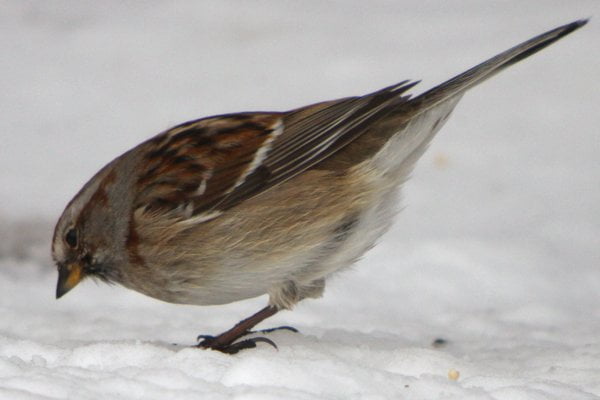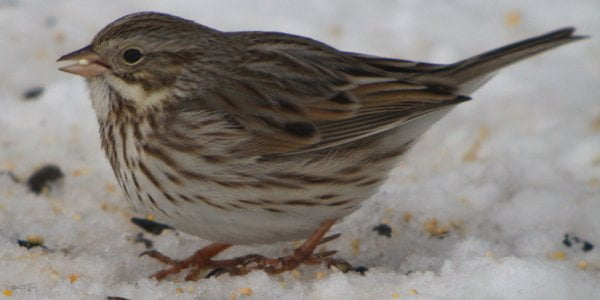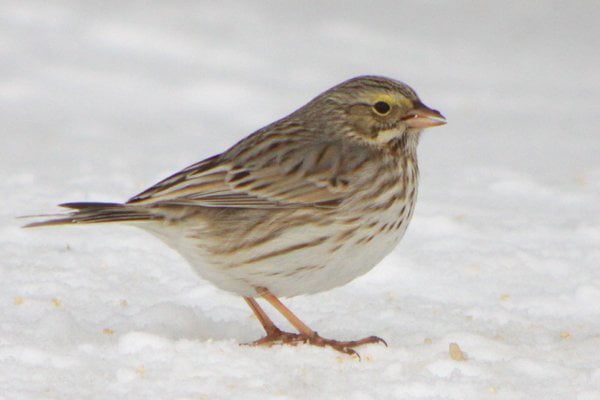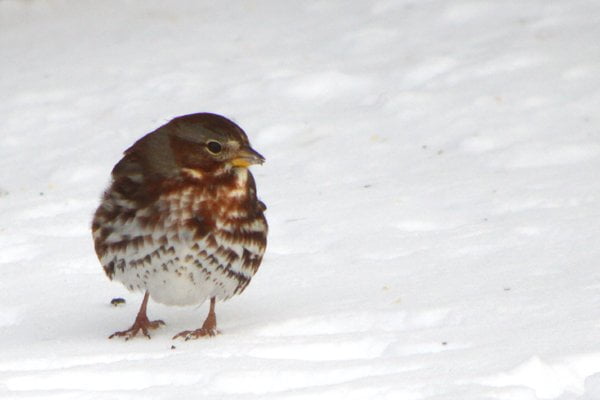I have only maybe ever seen one Green-tailed Towhee. It was back at the end of 2005, the year that I had started birding. I was at Meadows Park in Temecula, California, and the newness of all of the birds was kind of overwhelming  and lifers were all around me. I wrote down Green-tailed Towhee on my day list, and, several years later, when I started putting my lists into eBird and figuring out which of my earlier birding records I could trust and which I couldn’t I realized that I had no actual recollection of having seen Pipilo chlorurus. Now it is not as if Green-tailed Towhee is an absurdly rare species in winter in southern California but it is also not as if it is such a bland bird that I would be likely to forget having observed it.
and lifers were all around me. I wrote down Green-tailed Towhee on my day list, and, several years later, when I started putting my lists into eBird and figuring out which of my earlier birding records I could trust and which I couldn’t I realized that I had no actual recollection of having seen Pipilo chlorurus. Now it is not as if Green-tailed Towhee is an absurdly rare species in winter in southern California but it is also not as if it is such a bland bird that I would be likely to forget having observed it.
I erred on the side of caution and did not include Green-tailed Towhee on my life list. A couple of years ago I had a shot at rectifying that absence but, for whatever reason (time, money, and lack of a car are all likely culprits), I did not chase the bird in New Jersey that many others managed to see. Green-tailed Towhee has not appeared on my radar since.
You can imagine, then, the joy I felt when I realized that our route from New York to Essex County, Massachusetts, to compete in the Superbowl of Birding was within half-an-hour of a staked-out Green-tailed Towhee that was, for whatever reason, wintering in Rhode Island. Because it would be a life bird for both Andrew and me our fellow travelers, Jacob and John, were willing to indulge us and help us find the bird (that and if they weren’t willing I would have overruled them anyway because I was, after all, the driver).
As we approached Sachuest Point National Wildlife Refuge, on the outskirts of which the bird had regularly been seen at Second Beach Campground, we realized that we were not only driving on Purgatory Road, but passing Purgatory Chasm. This did not seem to bode well at all for our expedition. Interestingly, Purgatory Road pours into Paradise Avenue, which certainly seemed like a more positive omen, and we briefly sojourned in paradise before turning onto Hanging Rock Road and then Sachuest Point Road, which led us to our destination.
Northern Cardinal, which is, of course, not a Green-tailed Towhee
Now the towhee in question had been regularly seen at the east edge of the campground, behind some wire fencing. Helpful folks had been putting down seed regularly so we had hope that the bird had found enough food to survive the most recent winter storm that had dumped a bunch of snow. The four of us got out of the car, strapped our optics on, and trudged through the snow to where we would have a good view.
American Tree Sparrow, which is, of course, not a Green-tailed Towhee
We waited. And waited. And waited. In the meantime we were seeing quite a few nice birds, including a variety of sparrows, a Northern Harrier, a Carolina Wren, and always-fun-to-watch Black-capped Chickadees. We shifted positions. We chatted. We scanned with scopes and binoculars. And we waited. And waited. And waited. Savannah Sparrows, both regular and Ipswich, were a nice distraction but they were not our reason for having endured purgatory.
Savannah Sparrow, which is, of course, not a Green-tailed Towhee
Ipswich Savannah Sparrow, which is, of course, not a Green-tailed Towhee
Eventually, sadly, reluctantly, we had to pack it in. After all, we still had some driving ahead of us and we wanted to meet up with our Superbowl of Birding teams to get some last minute scouting in before dark. We headed out, having dipped on Rhode Island’s Green-tailed Towhee and assuming that the bird had succumbed to the weather. Heavy traffic meant that we didn’t make it to Essex County in time to get any scouting done. An email on the Rhode Island listserv indicated that the bird had been seen the day after our visit. This concerns me. Currently, I do not have a real nemesis bird but if things don’t improve soon Green-tailed Towhee might become one…
Fox Sparrow, which is, of…oh, you get it already!
…


















No nemesis? Er, Hawfinch? Long-tailed tit?
Anyway. There’s a Green-tailed Towhee in Michigan (of course), near (in?) Ann Arbor (where else). Just mentioning it, you know. If you sort of happen to be there any time soon.
And you deserve no pity for dipping. You saw a male Northern Cardinal in snow. Did it perch in an evergreen with snow on its branches?
Shame on you.
And both Savannah pics show the same Ipswich. Cheat! 🙂
@Jochen: I don’t have enough of a history with those birds for them to be true nemesis birds though, considering how much time Hendrick and I put into trying to see Long-tailed Tits (and Black Woodpecker for that matter) they do come close.
And, no, the Savannahs are of different birds, wise-guy. I actually got a couple of shots with two Ipswich and one non-Ipswich in the same frame but they aren’t very good. Wouldn’t it be neat, though, if a Savannah Sparrow had one side that was Ipswich and one that was regular?
Gotta say, If I could still see Fox Sparrows at this time of year, I’d be a pretty happy man.
Such a bird would clearly stir up taxonomy. It would prove they are separate species as the genes won’t mix freely, one defining the birds left and the other the bird’s right side.
And I still think they show the same bird: look at that little bump on the upper mandible. And the first bird’s grey back and pale breast streaking also scream “ipswich”.
And regarding Long-tailed tits and Hawfinches: They are all I’ve got here in Heidelberg to at least make you pretend you’re jealous. Don’t take that away from me.
My nemesis bird for a while was a Northern cardinal, if you can believe it. Every business trip I took east, I looked for them and somehow missed them. I told a group of birders at a refuge in San Antonio that I was hoping to see one, and they laughed pretty hard before making it their mission that I see one. (It’s probably what I would do if someone told me in Utah they really wanted to see a black-billed magpie.)
Corey, come to Utah (the Great Salt Lake Bird Festival is in May!) and we’ll help you get your nemesis bird. They’re especially beautiful singing from the sage.
Nice post and the description of the roads to get there 🙂
I call the birds I saw when I first started birding and don’t remember seeing “Second Lifers”. This is why I stopped what I was doing and sped to Sunken Meadow to see that Hermit Warbler. Second Lifer! It doubles the birding pleasure!
Technically, your first sighting is a BVD. ie “better view desired” This is for all sorts of sightings such as fleeting glimpses, obscured by leaves, and yes, cannot remember seeing it.
FWIW, I have long held the belief that if you don’t see a bird in a while, it ‘expires’ off of your life list and requires that you see it again to properly claim it.
But this? Golly – now you have turned a BVD into a nemesis bird! You’ve got it all wrong man!